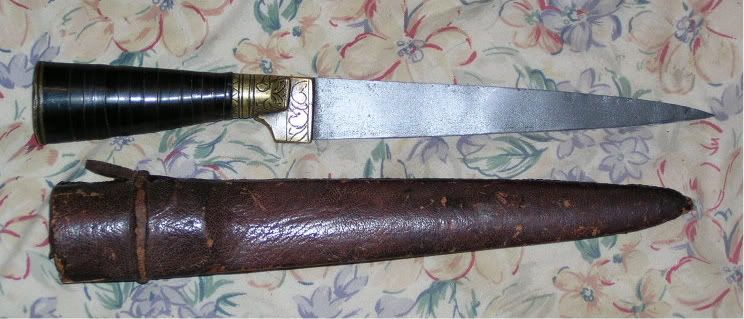
 |
|
|
|
|
#1 |
|
Member
Join Date: Mar 2006
Location: Room 101, Glos. UK
Posts: 4,259
|
nice knife, by the way.
we now have put to rest that evil venetian propaganda that marco polo, centuries after the hmong resettlement, brought back noodles from the orient in his travels. |
|
|

|
|
|
#2 |
|
Member
Join Date: Dec 2004
Posts: 1,247
|
Thanks. I wish I owned it.
Isn't that whole Marco Polo myth amazing? I can't believe people have believed it so long. Why, Trader Joes was selling raw spaghetti fruit in their produce section about a month ago, and people still insist on buying the dried, processed product. Fresh is so much better! Of course, we're not helping. No one has posted any of the antique spaghetti harvesting or processing knives in way too long. It's a shame, really--they're such weird knives for Europe. Anybody have one? Best, F |
|
|

|
|
|
#3 |
|
Member
Join Date: Mar 2006
Location: Room 101, Glos. UK
Posts: 4,259
|
unfortuneatly the only knife i have that might be sardinian appears to be not hmong. thus probably not for the spaghetti trade.
this one that katana has asked me to not tell him it is wootz...  and has been variously described as syrian/balkan/egyptian and/or sardinian. quite likely mediterranean anyway. doubt it is hmong. likely not iflissan either. anyhow, it's the only maybe sardianian one that pops up on a search here on 'sardinia'. Med. knife thread linky we are drifting due to lack of iflissan input i guess.... Last edited by kronckew; 27th October 2009 at 10:07 PM. |
|
|

|
|
|
#4 |
|
Member
Join Date: Dec 2004
Posts: 1,247
|
That's a neat knife too.
As for the one I showed, I'd actually noted the knives the Sardinians were using on an episode of <i>Anthony Bourdain: No Reservations</i> and looked it up on the web. The one thing that *is* somewhat relevant to the flyssa origin story is that these deep bellied, straight backed, long-tipped knives keep showing up in the Mediterranean. The Sards have them as kitchen and pocket knives, the Kabyles have a similar design on the flyssa, the rhomphaia (at least in Roman times) could be similar, and so on. Should we include the yataghan as well? Joking aside, it appears to be a useful design, and I wouldn't be surprised if the talibon and the Hmong kitchen knife weren't independently origins of the design, brought about by smiths trying to make a basic knife more useful by extending the point and deepening the belly. Best, F |
|
|

|
 |
|
|